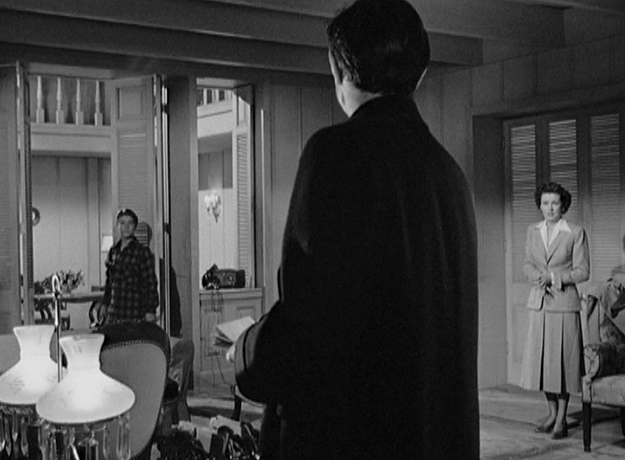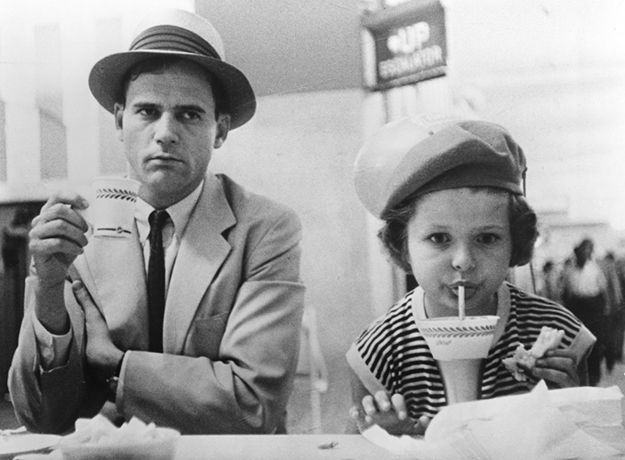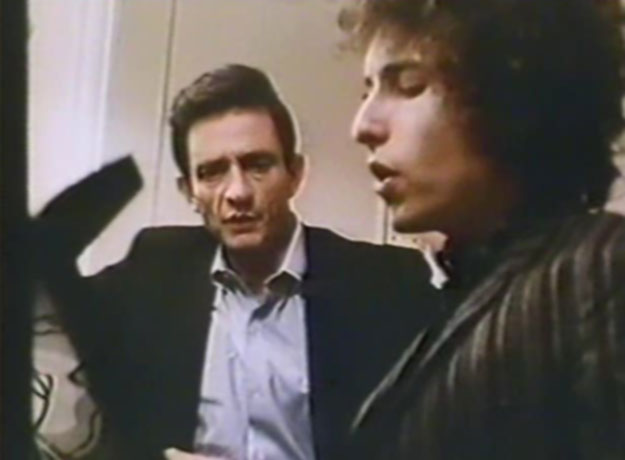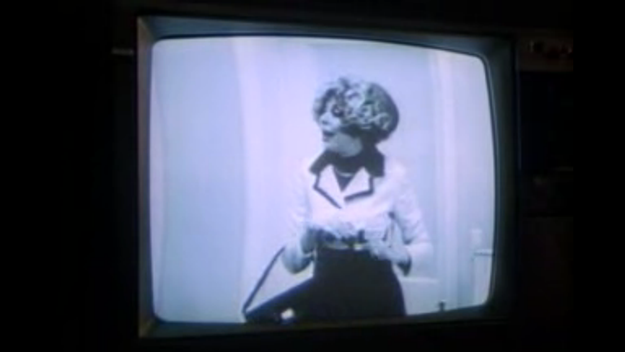Interview: Todd Haynes
Ever wonder how Todd Haynes’s movies achieve such specific, cohesive tones? Actors and collaborators doing press for Carol frequently invoke the multimedia dossiers he circulates prior to production, sharing music, colors, images, film recommendations, and other indicators of the imminent project’s look, sound, and feel. For viewers, the fun in Haynes’s films often derives from comparing his visions to their evident pretexts, like the loving riffs on Jean Genet in Poison (91) or the kaleidoscopic tours through Fellini, Godard, Lester, and Altman in I’m Not There (07). Even when his citations seem most direct—as in the homage to Douglas Sirk that famously structures Far From Heaven (02)—they always reveal subtle idiosyncrasies, encompassing quick nods to other influences amidst the more foregrounded tributes.
This November and December, Lincoln Center audiences can enjoy a peek into Haynes’s creative process through a film series called “Todd Haynes: The Other Side of Dreams,” which runs November 18 to 29. With the necessary exception of the legally black-boxed Superstar: The Karen Carpenter Story (87), Haynes has curated eight double- or triple-bills linking each of his features and shorts with movies that inspired something in their textures or constructions. Never one to belabor the obvious, he has avoided connections amply rehearsed in existing critical discourse, so don’t expect to see Far From Heaven alongside Douglas Sirk’s All That Heaven Allows (55), or the chilly, symmetrical interiors of Safe (95) in the company of Kubrick. Beyond casting his own films in fresh new lights, Haynes’s choices furnish a welcome showcase to features, documentaries, and experimental shorts that are hard to locate on DVD, much less to enjoy on the big screen.
FILM COMMENT caught up with him in Chicago last month to ask about the rationales behind his programming choices, eliciting some touching stories of how he first discovered these reverberant artifacts.

The Reckless Moment
I imagine that if people attend every night of this series, they might find that some films you chose resonate with more than one of your own movies. For example, I love the pairing of The Reckless Moment with Far From Heaven, but I also see glints of it in Mildred Pierce and even in Carol, where blackmail becomes a narrative concern, as does the image of a woman who simply won’t follow some man’s orders about how to resolve some major crises in her life. When did you first see it?
I came to it early, in a college course I took from Mary Ann Doane, and it just hit some nerve in me the very first time. The maternal force is operating on such overdrive, which absolutely relates to Mildred. It’s so important, too, when I consider my approaches to the love story, in Carol or in Far From Heaven, because Lucia in The Reckless Moment is so defended, she’s so in militant mode to conceal the body of her son! Protect the morality of her daughter! Maintain that household! For any other force or influence to penetrate all of that takes some real doing. And all along, Joan Bennett gives such an exquisite performance. What an amazingly cool woman she must have been. She was behind so many interesting productions, by Fritz Lang and Max Ophüls and others.
There’s an especially weird moment [in The Reckless Moment] when James Mason, as the blackmailer, expresses his feelings for Lucia for the first time. He’s calling her from a drugstore—
Asking her not to worry about the money he’s previously been worrying her about—
Yes! But we actually don’t cut to her, we push in on him, and suddenly, there’s music. And you realize in that moment, the film has completely privileged a romantic subject we didn’t see coming. And Mason gains a closer proximity to you than the woman the whole movie’s about. It’s a strange shift—maybe not entirely successful, even, but really fascinating and noteworthy.
We see how many barriers Lucia still puts up to his advances, such that any emotional response clearly signifies, to her or to him, as the ultimate transgression. But it all just comes pummeling out of her anyway, in the last scene of the movie. And, my God, that one shot. I’ve never studied a shot and copied it to the degree that, in Far From Heaven, I copy Joan Bennett crying on the bed. Not that anybody would ever care unless they were complete and total nerds, like me.
I saw it in graduate school, in a double bill with its American remake, The Deep End, which was just entering the repertory circuit a year into its run, and a couple of months before Far From Heaven came out. So when I saw your movie, and that shot on the bed, and your take on another black maid sharing the name of Sybil, plus some other residues, I didn’t remember the connections to The Reckless Moment but felt I was remembering a dream I must have had.
Yeah, I think those guys who made The Deep End resisted the temptation to copy much better than I did.
I also had no idea how lucky I was to see The Reckless Moment, which remains inexplicably elusive in this country on DVD.
That’s true of other Ophüls movies from that period, too. Caught is almost as rare, with Barbara Bel Geddes being so extraordinary. By now, Letter from an Unknown Woman has become easier to see, but as a group they’re so important and such gems.

Lovers and Lollipops
Staying with midcentury rareties for a minute, I just saw Ruth Orkin and Morris Engel’s Lovers and Lollipops, and though this isn’t the reason you’ve paired it with Carol, I feel like that movie may feature the realest kid in the history of American film.
Everything about that movie is amazing. For one thing, it’s totally post-dubbed, and incredibly well—even by the child. You seriously cannot tell. I have no idea how they did that. Beyond that, it’s certainly a phenomenal document of that mid-Fifties moment, but there’s also a real artistry to that film: the shots from the kid’s point of view, her looking through windows and doorways, which you see in Carol. I love the male lead, too, played by Gerald O’Loughlin, who only becomes known a decade or two later as a character actor. But above everything, I find the mother so fascinating as a specimen of a kind of femininity that does not exist anywhere in Hollywood films of the time, and certainly does not exist in contemporary life. Look at those scenes in Lollipops where the woman is waiting in an empty house, thinking O’Loughlin’s character just isn’t coming—yet there she sits, at a makeshift table, so remarkably poised.
For us, on Carol, scenes like that made it an incredibly useful resource for period specificity, to say nothing of the whole scene on the Macy’s doll floor, and beautiful shots on the streets of Manhattan. Even the chalk drawings you see on the brownstone stoops in that movie—
And also in the Chinatown scene—
That’s right, there, too! Those shots by Ruth Orkin match up with famous photographs by Helen Levitt of kids scrawling with chalk in the middle of a street. Levitt was another artist that inspired us on Carol. I loved the image so much that I literally added a line so we could use it in Carol, when Therese speaks to her boyfriend Richard from her window, and says: “I love all your chalk drawings.” It was just totally cheating. But I had to.
Other selections in the Lincoln Center series, like Fox and His Friends with Poison, were not such direct links. I knew there had to be a Fassbinder and a Sirk in the mix, but I didn’t want to put them where people might expect them.
To see Sirk with Safe is such a fresh twist, given how that film predates the moment in your career when his influence on you became more obvious. Were you consciously thinking about Imitation of Life while working on Safe, or is Sirk’s pervasive imprint on your work more palpable to you now?
I wasn’t necessarily thinking about Imitation at that time, though I was always interested in Sirk as a distanciator, and his genius with the false happy ending. I know that might be more classically demonstrated in All That Heaven Allows or Magnificent Obsession than in Imitation of Life. And you know, by contrast, Far From Heaven, for all its reliance on Sirk, doesn’t really have that false Sirkian ending. It just goes for a more sincerely compromised and sad ending, and an obvious sense of loss. But Safe does have one. It follows through with narrative expectations of Carol seeming to get better, but by the time the film ends, you have accrued so much information about Carol’s sad acquiescence to the laws of identity, and even the new rules of identity that she accepts at Wrenwood. For her to say “I love you” in the mirror should feel like something has resolved, but all the film language in Safe should be telling you that nothing is resolved. And that, to me, is Sirk.

Eat the Document
Another surprise for audiences might be Eat the Document, a quite different Bob Dylan concert-tour documentary than Don’t Look Back, which many folks will know better. Among all of their divergences, which are most important in your mind?
I haven’t watched Eat the Document in a little while. Dylan cut the first half-hour of it, and I think Robbie Robertson cut the rest of it, and it’s so fractured, like an anti-concert concert film, full of strange diversions. You remember scenes like when Dylan gets pulled off the stage and, thinking back, you almost can’t place where in the film they actually happen. But that said, the cutting of this bizarre object is really gorgeous. Shots where the camera is so high up it’s almost terrifying, capturing a spookiness in his world at that time. Then there’s a scene of Dylan performing a song in a hotel room, which we used in I’m Not There. It’s the only document that exists of him singing that song live. There are so many slips and fragments like that which don’t exist anywhere else except in this resolutely obscure, sort of suppressed movie that I think Dylan has always been very ambivalent about. For what reason, no one exactly knows.
You’re also showing I’m Not There with your own early short film Assassins: A Film Concerning Rimbaud, which I hesitate to call suppressed, and yet I cannot be your only fan who has longed to see it and finds it’s impossible to locate.
That’s one I can watch without squirming too much. There are some parts I find really lyrical, still. What I like about the film, and what it always was to me, is a story of translation: the way Rimbaud is appropriated by artists and writers, who almost covet him as their own. So a lot of the soundtrack is made of multiple voices reading translations of the same poem on top of each other, and in the original French as well—these highly mythologized moments in his work. People will see the influence of Fassbinder, for sure, including some freeze-frames, and a shot of a burning card straight out of Querelle. And there are other moments of experimentation or of me translating different influences. For example, after a shot of Verlaine fucking Rimbaud, the camera pans over the room, very Laura Mulvey, very Peter Wollen, and then finds me and my then-boyfriend in this Fassbinder pose, blankly staring at this event on the bed. There’s step-framing and a lot of punk, and some Henry Miller, who was obsessed with Rimbaud, so he becomes a way to think about everyone’s over-identification with Rimbaud, mine included.
Has anybody ever proposed making Assassins available as perhaps a special feature on a disc of one of your films?
It should be. I would actually like to have that available with something, but there hasn’t been an obvious pairing in a little while.

Dottie Gets Spanked
Lastly, interviewing you here in the city of Roger Ebert, I have to ask you about Beyond the Valley of the Dolls, which you’ve paired with your tremendous short Dottie Gets Spanked, maybe the film of yours I teach most often.
I always think about Roger so fondly when I’m here in Chicago. I thought the documentary that came out about him last year was really moving and gorgeous. He was so kind, and I remember being at the Chicago Film Festival with Far From Heaven, which he really loved.
But I will tell you, when I first met Roger Ebert, it was right after he had most definitely not cared for Poison. I can’t remember if our encounter was at a festival, or possibly at that year’s Independent Spirit Awards. I went up to him and said: “I know you don’t like my film, but I love yours.” I think I might have said it with a slight twist of the knife, because I’d heard he was not totally happy with the movie they had made of his script for Beyond the Valley of the Dolls. I may have been wrong, or his feelings may have changed over time. But it was not as revered or as seriously taken up, even by that point in time, as it has been lately.
But you know what: it’s an amazing film. Just editorially, Beyond the Valley of the Dolls has the most bizarre, sped-up editing. There is almost no line in the film that is completed in one shot, without being interrupted by the next shot. There’s so much going on in the movie already: the fantastic soundtrack, the montage sequences, all the subplots, the party scenes, a lesbian love story that is actually incredibly sincere and heartfelt. The original cut must have been, like, three hours. So you can imagine someone in the editing room going, Let’s just take all of this footage and make it feel like there is no moment, ever, anywhere, that just rests. In that way, it has a rhythm completely of its own, and I think it’s brilliant.



